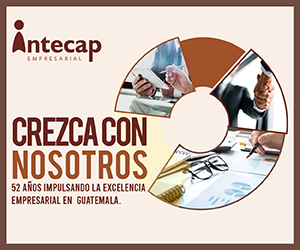Aid groups worry that Guatemala, long one of Latin America’s most unequal countries, will be hit hard by the effects of COVID-19, piling further hardship on a population already suffering extreme poverty, violence, and years of climate change-driven drought.
As the number of confirmed cases passed 700, scores of people took to the streets of Guatemala’s cities in recent days, waving white and/or red flags, signalling they need food and medicine. Others, in poor neighbourhoods, hung them from their houses.
Many Guatemalans have lost their jobs or can’t access informal work due to strict lockdown measures, and a quarter of overseas remittances – approximately 12 percent of the country’s GDP – have stopped, according to Oxfam’s representative in the capital.
Ana María Méndez Libby, the aid group’s country head, described the situation as “complex”, especially due to drought ramping up poverty levels in rural areas, where half the population lives. “To put it politely, it has a very fragile social protection system, where health, food security, and water and sanitation are extremely bad,” she told The New Humanitarian.
Weak development, high levels of violence, and a lack of government accountability have seen mass emigration to the United States, increasingly of women and children and entire families rather than just the young Guatemalan men who used to more typically migrate.
A quarter of overseas remittances – approximately 12 percent of the country’s GDP – have stopped.
However, tough US anti-immigration policies – in particular a July 2019 law barring Central Americans from seeking asylum in the United States if they don’t seek it first in the countries they cross – have effectively shut the door on Guatemalan asylum seekers.
Dependent on Washington for aid, the Central American country is bound by a 2019 accord that obliges it to not only to accept Guatemalan deportees from the United States but also any failed asylum seekers the United States wants to return from El Salvador and Honduras.
Last month, as COVID-19 cases rose rapidly, Guatemalan President Alejandro Giammattei suspended deportations after planes were found to be carrying large numbers of infected people. The US authorities now appear to be testing deportees prior to departure, and flights have resumed.
While considered a middle-income country by the World Bank, Guatemala has the second highest level of poverty in the Americas. Poverty – defined as earning less than $5 a day – is mostly concentrated in indigenous communities, where it is 2.8 times higher than in the rest of the population. At least 40 percent of Guatemalans are indigenous – from a range of groups including the Kaqchikel Maya, Garifuna, and Xinca.
Marginalised rural areas
On 25 April, the UN’s emergency aid coordination body, OCHA, reported that lockdown measures were exacerbating seasonal hunger in eastern Guatemala, already badly hit by a 2019 drought. According to health ministry figures cited by the UN, acute malnutrition cases in the department of Chiquimula have increased 56.6 percent compared to a year ago.
The area is located in the Dry Corridor – a region extending from Mexico to Panama that regularly suffers from floods and drought. Many people migrate from there to urban areas, often encountering violence and corruption in the cities before heading on northwards.
The Network for the Defence of Food Sovereignty in Guatemala, a local aid group known by the Spanish acronym REDSAG, told Prensa Libre that hunger and malnutrition couldn’t be coming at a worse time for parts of the Dry Corridor, where food reserves are lacking, prices of basic goods have risen, and unemployment is up.
Oxfam is working with local groups to deliver food, sanitary, and medical products in Guatemala, particularly to indigenous communities, including in the Dry Corridor.
Méndez Libby said the pandemic has forced Oxfam to innovate. Instead of sending in people from outside to distribute aid – and risk spreading the virus – it is transferring credit to locals’ phones and employing them to collect and distribute two months’ worth of essential goods in areas needing assistance.
Government lockdown measures include strict stay-at-home orders, overnight curfews, mandatory use of masks – with fines ranging between $914 and over $16,300 for those who fail to do so – and suspension of all public transport.
A study by the Guatemalan health ministry in 2017 showed that the government was spending fractions of its health budget in rural zones compared to in the country’s largest, wealthiest cities. “One understands why the Guatemalan population feels abandoned by the state on health matters,” the report concluded.
Méndez Libby said that COVID-19 assistance outside major towns had been inadequate. “The government has offered some relief, but it is not enough, it is not effective, it is not efficient,” she said. “They are not seeing the whole dimension, and they think that once things reopen it will be normal.”
“It is impossible to provide for everyone.”
In Patzún, a Kaqchikel Maya town of 55,000 people some 80 kilometres from the capital, a first case of COVID-19 was reported in early April. Many residents need emergency assistance due to the lockdown, but the government only sent an insufficient 60 aid boxes for the town’s entire population, according to one aid worker.
“It is impossible to provide for everyone,” the aid worker told TNH, speaking on condition of anonymity. “My sister (who works for the mayor) had to hand out 20 boxes, but they didn’t even provide a criteria for who to deliver them to.”
Subscribe to our coronavirus newsletter to stay up to date with our coverage.
Deportation issues
Since the United States – which has by far the highest number of coronavirus cases and deaths in the world – stepped up deportations under new COVID-19-related regulations in March, some 20 percent of infections in Guatemala have been traced to the returnees.
The National Roundtable on Migration, or MENAMIG, a group that coordinates Guatemalan organisations that work with migrants, reported a sharp increase in the numbers of deportees. During the first three months of 2020, 21,836 people were expelled to Guatemala, compared to 16,432 for the same period in 2019.
The government has faced criticism for the way it has handled returnees.
“The airport [in Guatemala City] was not an adequate facility to keep deportees,” said Juan José Hurtado, executive director of Pop Noj, a Guatemalan NGO that provides services to migrants and works with indigenous communities.
Migrants were then moved to an athletes’ dorm at a large sports centre known as the Domo Polideportivo. As of 22 April, this ad hoc reception centre held 226 returnees, with the rest quarantining at home, according to Alejandra Mena, a government migration spokesperson.
Deportees, including those from El Salvador and Honduras, are also arriving in Guatemala by land, via Mexico. Mexican border control agents load them on buses to the southern border with Guatemala, where, according to AP, they are instructed to cross informally due to the official closure of the border.
Father Juan Luis Carbajal, executive secretary of Pastoral de Movilidad Humana, a regional Catholic aid group, confirmed to TNH that some 300 people had been dropped off in recent days in the southern Mexican city of Villahermosa, before making their way to the Guatemalan border.
Meanwhile, civil society groups worry about non-Guatemalans being pushed back into the country, especially as they could contribute to the spread of COVID-19.
“We have no information from the government or the media about what is happening in our country with irregular migrants from other nationalities,” said Julia González Deras, executive coordinator of MENAMIG, referring to health services being provided for the international deportees. One of the big problems, she said, is that on the Mexican side of the border, health authorities are only checking the deportees’ temperatures, not for COVID-19 itself.
In addition to 6,500 Guatemalans, some 5,000 Hondurans and 1,600 Salvadorans were deported by the United States and Mexico between March and mid-April, according to the International Crisis Group, which described virus testing as “far from reliable or robust”.
Guatemala has officially refused to accept deportees of other nationalities. At least some returnees from El Salvador and Honduras appear to be heading south and making their way to their countries of origin despite the border closures.
President Giammattei also said many Guatemalans living undocumented in the United States are leaving the country due to their fear of being infected by the virus. “They arrive in Mexico, pay coyotes (traffickers) to cross at blind spots (along the border) and arrive in Guatemala without any control,” he said.
With the exception of domestic and gender-based violence, the authorities have reported a drop in violent crime since Guatemala’s strict lockdowns were imposed: 617 homicides between 1-28 March compared to more than 800 in preceding years.
But the lack of social safety nets and government support for those suffering the economic fallout of the lockdown may soon lead a new wave of poor Guatemalans to flee the country, warned Oxfam’s Méndez Libby.
“Those who have always tried to move will always move, whatever the circumstances, despite the huge restrictions and the militarisation of the borders,” she said. “People will always think that there is something better elsewhere.”
Additional reporting by Xiomara Rivas in Guatemala City






































